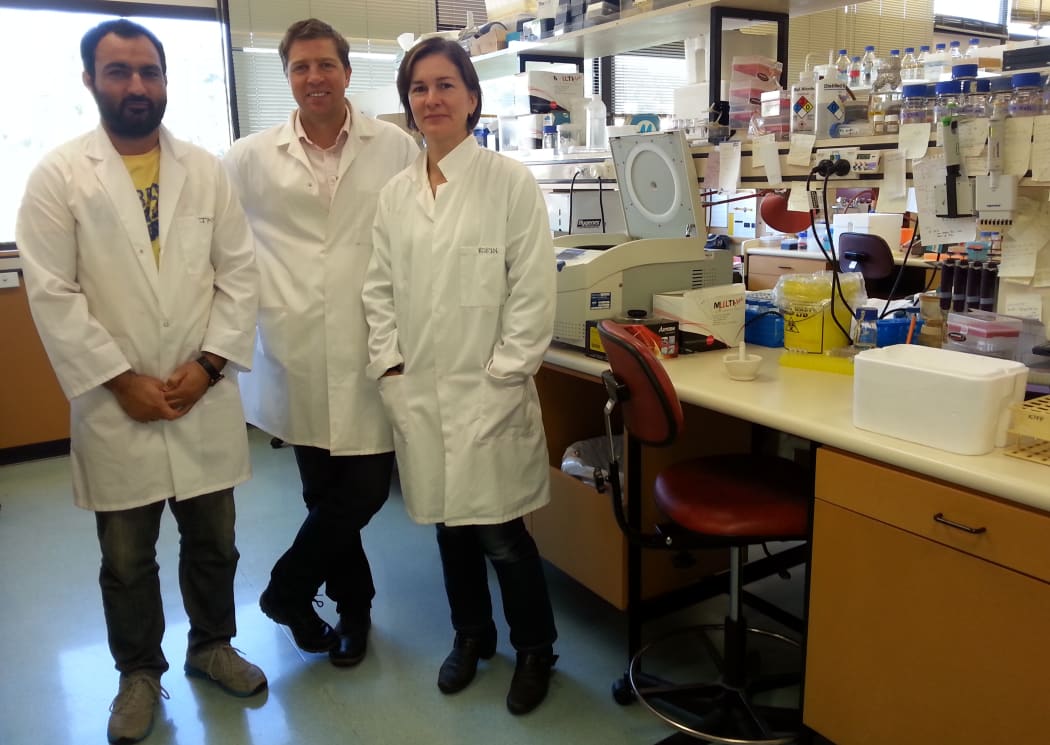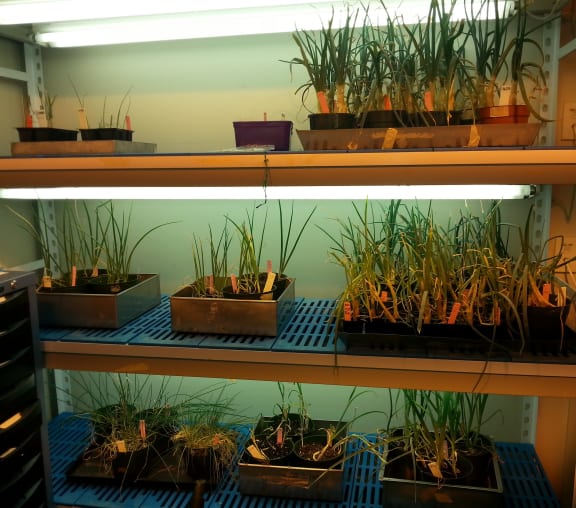by Ruth Beran
University of Otago researchers have discovered the underlying genetic mechanism for bulbing in onions, research that may result in onions that more reliably produce bulbs when required or are better tailored for climatic conditions.
While it’s been known for nearly 100 years that bulb formation in onions is linked to day length, the genes responsible for bulbing were not known.
Finding the underlying genetic mechanism was a bit of a surprise for the team.
“We thought we were looking at flowering in onions," says plant molecular geneticist Robyn Lee, "but it turns out we were looking at bulbing."

From left to right: Jiffin Khosa, Richard Macknight and Robyn Lee in the lab Photo: RNZ / Ruth Beran
Understanding when a plant flowers is an important trait for any breeder, because the timing of flowering in a plant determines when it produces its fruit or grain.
Onions have a complicated life cycle where it takes two seasons from planting to get the bulb. In some instances, the plants will put its resources into a flower instead of a bulb and that plant is wasted.
“The project started to try and first understand why the onion bulbs flower prematurely,” says Dr Richard Macknight.
Using high-throughput genetic sequencing, the genes in onions could be discovered at a relatively low cost. Genes where extracted and put into a small, quick growing model plant called Arabidopsis to look at how they affected flowering time. The expression of genes that affected flowering were then studied in onions, over time, and in different light and growth conditions.
“The gene that caused delayed flowering in Arabidopsis was highly expressed in the juvenile form of the onion plant, and not at all expressed in a bulbing plant,” says Robyn. “And the gene that had accelerated flowering in Arabidopsis was highly expressed in a bulbing onion but not at all in a juvenile onion. Which quite surprised us.”
It was then that the scientists knew they were looking at genes for bulbing not flowering in onions.

Short and long day onions growing in the plant room at the University of Otago Photo: RNZ / Ruth Beran
Their discovery can now be used to help breeders make better varieties of onions, particularly as there are two classes of onions grown around the world: short-day and long-day onions.
Long-day onions are grown in places like New Zealand, America and Europe where we have long days in spring and summer. These onions require 16 hours of day length to trigger bulb formation.
Short-day onions are grown in tropical regions liked Asia, India and Africa where day length is shorter, requiring only 12 hours of day length to make bulbs. “The short-day varieties are not nearly as well developed, so their shelf life is poorer, and the quality is less,” says Richard, “but the onions evolved from those short-day areas so there’s a lot of diversity.”
Understanding the genetic mechanisms in onions may mean that traits like better shelf life, better quality, and higher yields from long-day onions could be transferred to short-day onions. Conversely, disease resistance genes could be brought from short-day onions into long-day onions.
“If you’re going to do that sort of swapping around, then you really need to know what the difference between a long-day onion and a short-day onion is,” says Richard. “We know the hormone involved, our next step, and what we’re working on right now is to discover what is the difference between the long and the short-day onion.”

